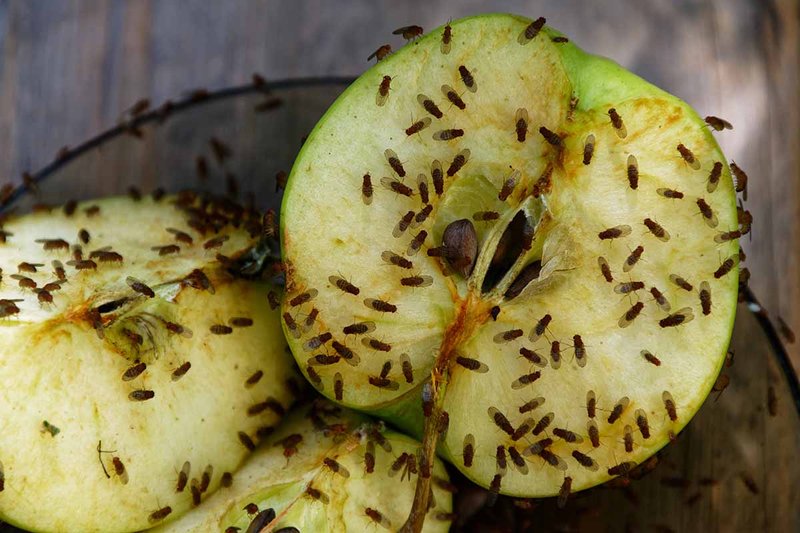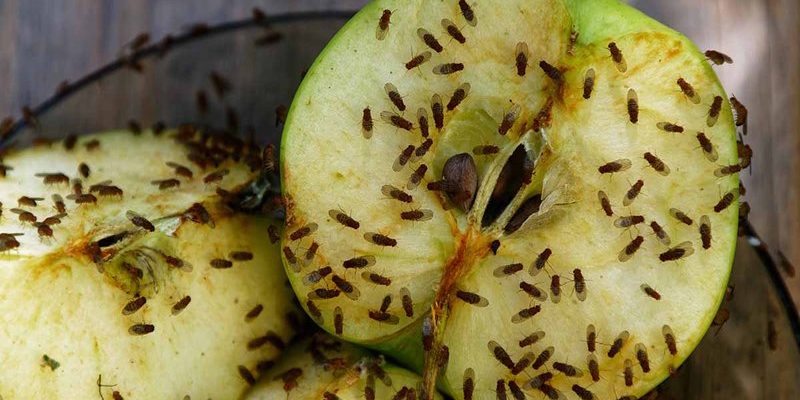
If you’ve ever wondered about the risks fruit flies deal with, you’re not alone. Picture a bustling city where every creature has to navigate dangers — some are natural predators, while others are environmental factors that can lead to their decline. Let’s dive into the world of fruit flies, their challenges, and the predators that keep their numbers in check.
Natural Predators of Fruit Flies
When we think of predators, we often picture something fierce, like a lion stalking its prey. For fruit flies, though, their predators are much smaller but equally ruthless. Wasps, particularly parasitoid wasps, are some of the top contenders when it comes to hunting down fruit flies. These tiny wasps lay their eggs inside fruit fly larvae, and when the eggs hatch, the developing wasp larvae consume the fruit fly from the inside. It’s a brutal, yet fascinating part of nature’s balancing act.
Birds also play a significant role in controlling fruit fly populations. Sparrows and other small birds are expert hunters, often seen darting around gardens looking for quick snacks. They might not solely target fruit flies, but when the opportunity arises, they certainly won’t hesitate to snatch one up. It’s like having a natural pest control service – just one of nature’s ways of keeping the fruit fly numbers in check.
Insectivorous Animals and Other Predators
Beyond birds and wasps, there are several other creatures that feast on fruit flies. For example, spiders can be quite the efficient hunters. Many species use webs to trap unsuspecting flies, and those sticky strands can be a fruit fly’s worst nightmare. Imagine being caught in a web with nowhere to go; that’s the last thing a fruit fly wants!
Ants also have a knack for snatching up fruit flies. They can team up to take down larger prey, working together like a well-oiled machine. If you’ve ever seen an ant carrying something much bigger than itself, you know how determined these little critters can be. They scavenge and hunt, ready to take advantage of any fruit fly that crosses their path.
Environmental Challenges Facing Fruit Flies
While predators are a direct threat, environmental factors also play a huge role in the lives of fruit flies. Weather conditions can be quite unforgiving. Extreme heat, heavy rains, or cold snaps can dramatically impact fruit fly populations. For instance, if it’s too hot, fruit flies may have trouble finding suitable habitats for laying their eggs. This can lead to decreased reproduction rates, which directly affects their numbers.
Additionally, the presence of pesticides can be a real game-changer. While they might help gardeners keep pests at bay, they don’t discriminate. When sprayed, these chemicals can wipe out not just the target pests but also beneficial insects like fruit flies. Imagine a chemical storm sweeping through a community — that’s what pesticides can feel like for them, drastically reducing their populations.
Competition from Other Insects
In the bustling world of insects, competition is fierce. Fruit flies aren’t the only ones drawn to rotting fruits and vegetables. Other fly species, like houseflies, can crowd them out. When food sources are limited, these competitive pressures can make it harder for fruit flies to thrive. It’s much like having a big crowd at a popular event; not everyone gets the chance to enjoy the goodies.
Moreover, other insects, like gnats and beetles, might outcompete them for the same resources. It’s a tight race for survival, and all these competitors are just waiting for a chance to take the lead. The more crowded a space is, the tougher time these little guys have making a living.
Pathogens and Diseases Threatening Fruit Flies
Like many organisms, fruit flies are susceptible to various pathogens and diseases. Fungi and bacteria, for instance, can wreak havoc on their populations. One example is the fungus *Entomophthora*, which can infect fruit flies and cause them to behave oddly before ultimately leading to their demise. This fungus acts as a parasite, turning infected flies into zombies, leading them to climb to high spots before they die, thus spreading its spores far and wide.
Additionally, viruses can be a significant threat as well. Various viral infections can spread rapidly among fruit flies, especially when they are in crowded environments. This is a common scenario in agricultural settings where they might be present in large numbers. Imagine a cold spreading through a school — that’s the kind of effect a virus can have on a population of fruit flies.
Human Impact on Fruit Fly Populations
Humans have a profound impact on fruit fly populations, intentionally or not. The use of chemicals and pesticides has already been mentioned, but let’s dive a little deeper into this. Agricultural practices can alter the natural balance of ecosystems, putting additional pressure on fruit fly populations. When farmers overapply pesticides, they not only target pests but also harm beneficial insects that are crucial for pollination and decomposition.
Moreover, habitat destruction plays a role as well. As human development expands, we encroach on the natural habitats of these flies. Urbanization and deforestation reduce the environments where fruit flies thrive, making it harder for them to find food and reproduce. It’s like a shrinking stage for a play — with fewer resources, actors struggle to perform their roles effectively.
Future Outlook for Fruit Flies
So, what does the future hold for fruit flies? Despite the challenges they face from predators and environmental factors, these little insects have been around for a long time and have remarkable resilience. They have a rapid reproductive cycle — meaning they can bounce back quickly from population declines. Here’s the thing: as long as suitable environments and food sources exist, fruit flies will continue to adapt and survive.
Research in the field of pest control is ongoing, aimed at finding balanced methods to manage fruit fly populations without causing significant harm to their ecosystems. Who knows? With advancements in science and a better understanding of these tiny creatures, we might even find ways to enhance their populations in a sustainable way.
In conclusion, fruit flies are a fascinating part of our world. They face numerous threats, from natural predators to environmental challenges. But their ability to adapt and thrive also showcases nature’s incredible resilience. Next time you spot a fruit fly buzzing around, take a moment to appreciate the intricate balance of life they represent — and maybe even wish them luck in their daily struggle for survival.

